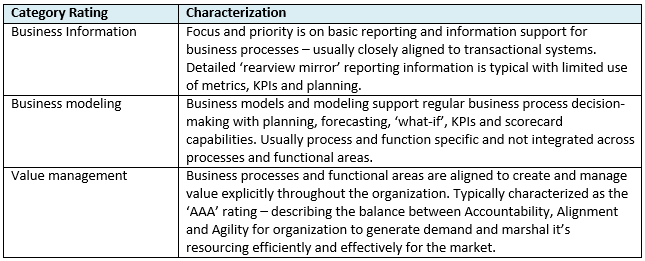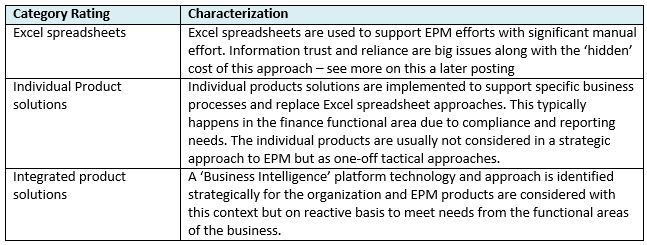In the last article we looked at a pragmatic approach to assessing EPM Maturity using a Maturity Matrix. In this article we’ll expand on the matrix and also develop the ideas of what this can be used for in developing an EPM approach in an organization.
Last time we introduced a categorization and scoring for assessing both the functional areas of an organization and the business enablers in terms of EPM. But what are these categories based on?
Let’s start with our People Assessment of: Unskilled; Semi-Skilled; Skilled. Now the first thing to state is that the terminology or rating of ‘Skilled’ is purely in the terms of understanding and leveraging EPM as an asset or enabler for the business. So here are some ideas of what the categorization of the people rating:

Moving on now let’s consider the Processes. This aspect of the matrix is looking at where the process focus is for functional areas of the organization:

And finally let’s consider Technology – the subject that is sometimes most readily associated with EPM – but as we can see it needs to be understood and thought in context with an organization’s people and processes:

Having gone through the definitions of the EPM Maturity Matrix, you now have the context to do some quick self-profiling. Ideally you want to apply this assessment to specific business processes within each function to generate a more in-depth profile of your EPM Maturity.
In the next article we’ll look at what these results can tell you and, more importantly, what they can be used for to help you with developing a value-based EPM Strategy.










